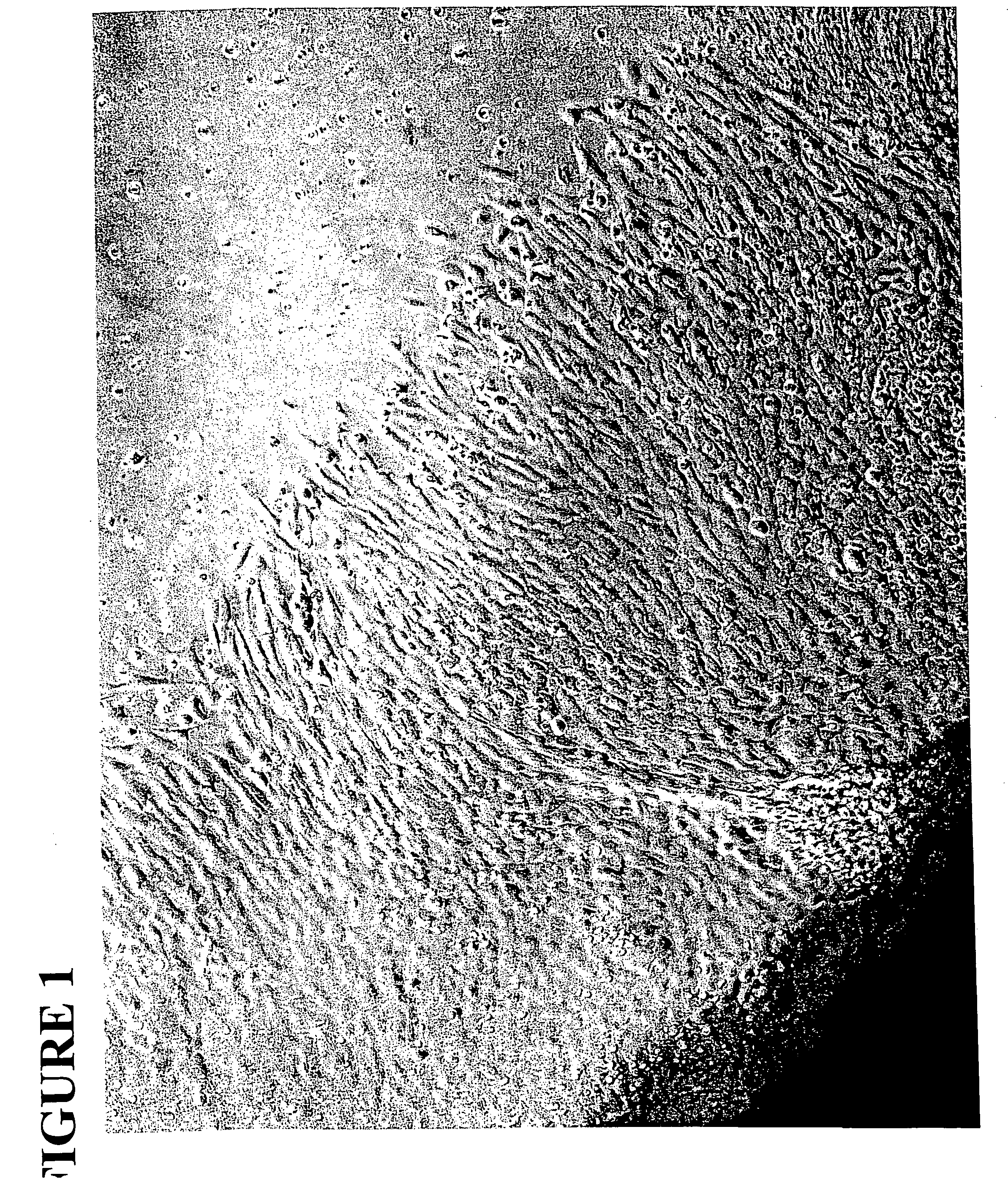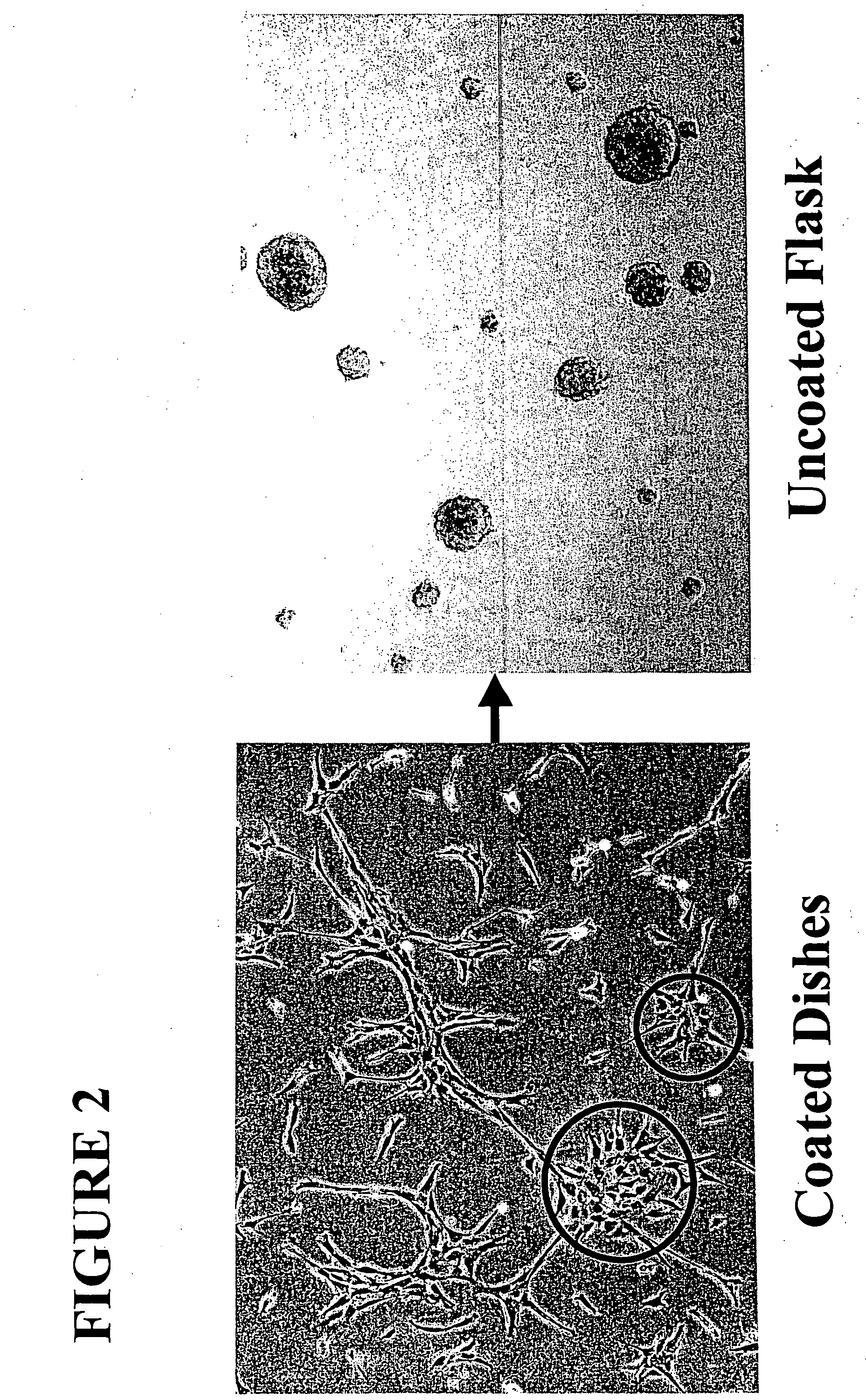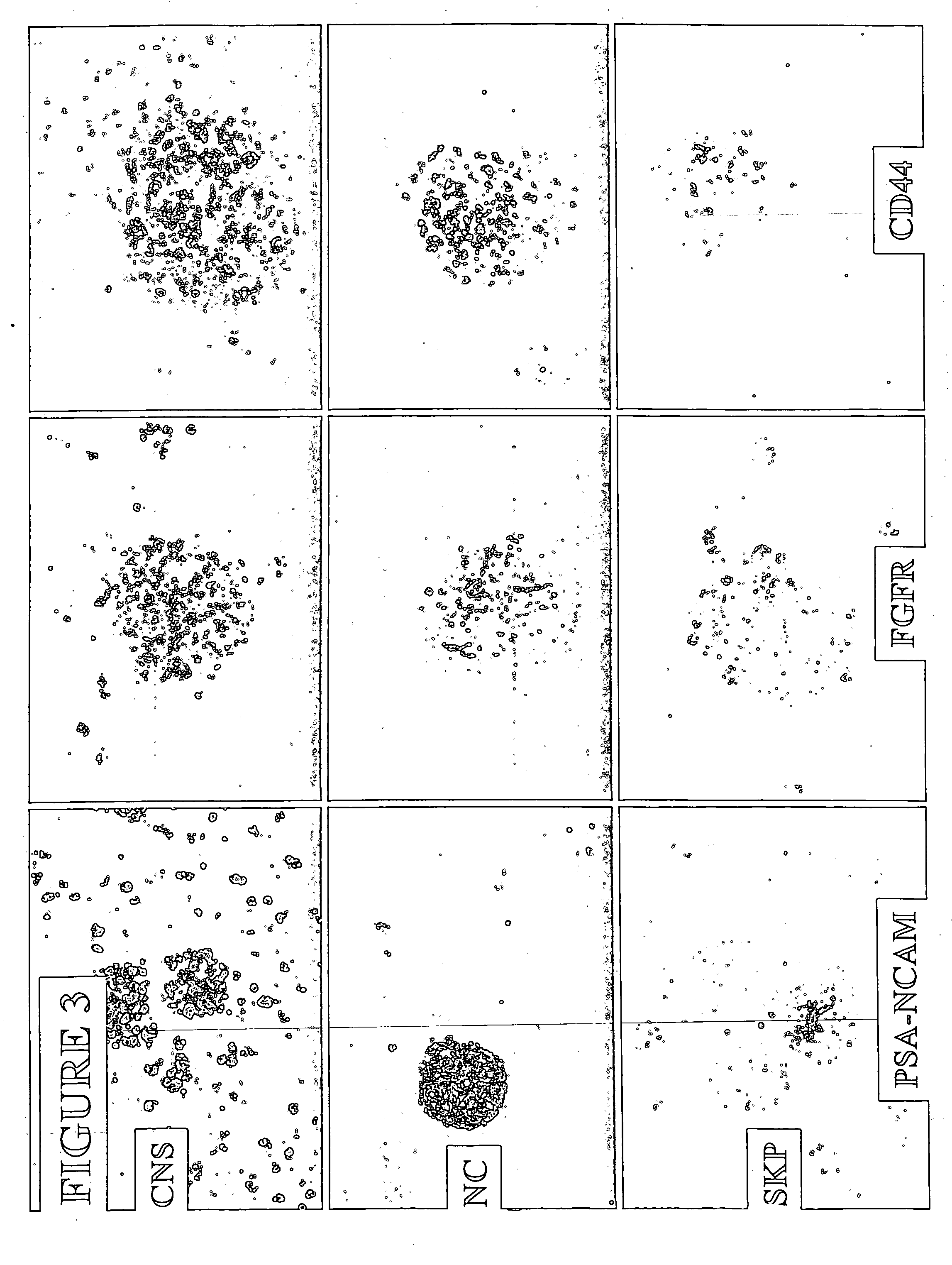Neural crest stem cells and uses thereof
a neural crest and stem cell technology, applied in the field of neural crest stem cells, can solve the problems of affecting the transplantation progress, affecting the treatment effect, and often debilitating and incurable diseases, so as to prevent, treat, or reduce diseases
- Summary
- Abstract
- Description
- Claims
- Application Information
AI Technical Summary
Benefits of technology
Problems solved by technology
Method used
Image
Examples
example 1
Isolation of Neural Crest Stem Cells from Neural Tube Explants
[0034] Neural tubes were obtained from E10.5 rat embryos (see FIG. 1). Following dissection, these tubes were placed on moist culture dishes that had previously been sequentially coated with poly-D-lysine and fibronectin. Dishes were placed in the incubator at 37° C. for 30 minutes to allow the tubes to adhere to the dishes. Following this incubation, dishes were flooded with 3:1 DMEM / F12 supplemented with N2, chick extract, retinoic acid, BDNF, and FGF. Tubes were cultured under these conditions for a period of four days. During this period, NCSCs migrated out of the tube and had attached to the substrate. The tubes and a margin of the attached migrating cells were scraped off the dish, which was then washed several times to remove all non-neural crest cells.
[0035] Cells that had adhered to the culture substrate were trypsinized, transferred to new culture dishes coated with poly-D-lysine and fibronectin, and cultured ...
example 2
Differentiation from NCSCs-Derived Spheres
[0038] NC-derived spheres were plated on poly-D-lysine and laminin in DMEM / F12 supplemented with chick extract, N2, retinoic acid, NGF and 2% serum. Immunostaining was performed for neurofilament after 6 days (see FIG. 7). NC-derived spheres were also plated on poly-D-lysine and laminin in DMEM / F12 supplemented with N2, N2+BMP2, or Serum+BMP2. Differentiation was assessed by neurofilament and smooth muscle actin (SMA) staining (see FIG. 8). Our results show that like NCSCs, cells from the NC-derived spheres differentiated into neurons and smooth muscle cells following BMP2 and serum treatment, respectively.
[0039] NC-derived spheres were passaged five times in DMEM:F12 supplemented with chick extract, N2, retinoic acid, NGF, and 2% serum. NC-derived spheres were treated with either BMP2 or HRG-β, after which immunostaining was performed. Differentiation was assessed by neurofilament and CNPase / Gal C staining (see FIGS. 9A and 9B). As shown ...
PUM
 Login to View More
Login to View More Abstract
Description
Claims
Application Information
 Login to View More
Login to View More - R&D
- Intellectual Property
- Life Sciences
- Materials
- Tech Scout
- Unparalleled Data Quality
- Higher Quality Content
- 60% Fewer Hallucinations
Browse by: Latest US Patents, China's latest patents, Technical Efficacy Thesaurus, Application Domain, Technology Topic, Popular Technical Reports.
© 2025 PatSnap. All rights reserved.Legal|Privacy policy|Modern Slavery Act Transparency Statement|Sitemap|About US| Contact US: help@patsnap.com



